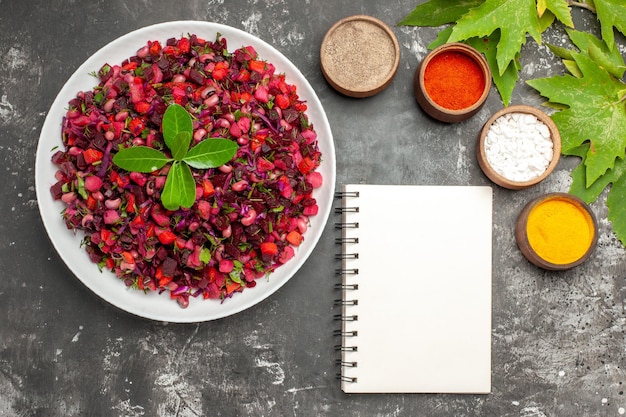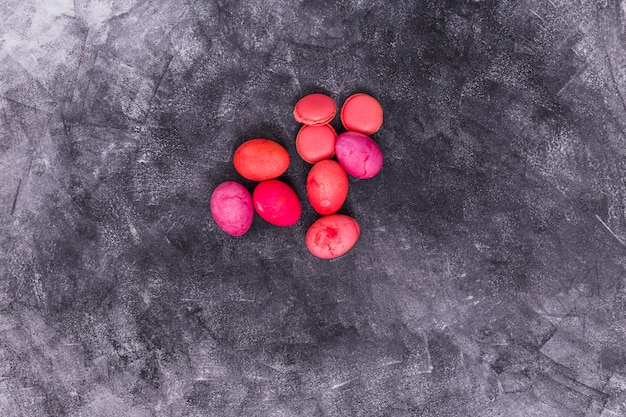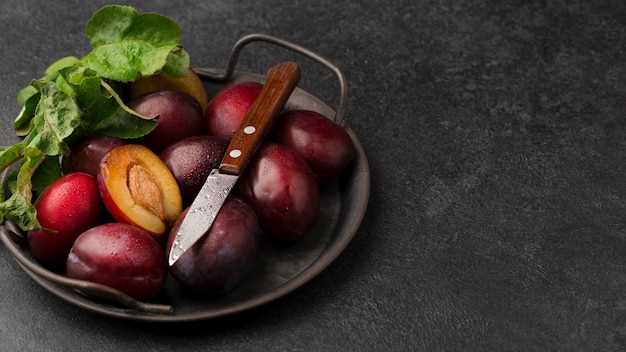Let's talk beets! Now, I know, they're not the most glamorous of vegetables. Some folks might even consider them a bit earthy and unassuming. But, trust me, once you get to know them, you'll discover a world of flavor and versatility. I'm here to tell you, give them a chance, and you might just be surprised.
Beets are like a well-kept secret, full of amazing flavor and potential. They're packed with nutrients, and they can be the star of the show in many dishes, from simple salads to elaborate cakes.
This article is your comprehensive guide to all things beetroot, covering everything from choosing the perfect beet to prepping, cooking, and turning them into something truly delicious. So, grab your apron, put on your thinking cap, and let's get cooking!
Part 1: Getting to Know the Beetroot

The Humble Beetroot: A Bit of History and Flavor
The beetroot, also known as the beet, has been a staple food for centuries. It's thought to have originated in the Mediterranean region and has been cultivated for its edible root and leaves for thousands of years.
But what makes beets so special? For me, it's their earthy, sweet flavor that can be both subtle and intense, depending on how you cook them. It's a flavor that's both comforting and complex, reminiscent of autumn days and cozy meals.
Types of Beetroot: A Rainbow of Flavors
While the familiar red beet reigns supreme, there are actually several varieties of beets to explore. Each has its own unique character and flavor:
- golden beets: These beauties boast a bright golden hue and a subtly sweet, almost honey-like flavor. They're perfect for adding a touch of color and a subtle sweetness to salads or roasted vegetable dishes.
- Red beets: These are the classic beetroot, known for their deep crimson color and rich, earthy flavor. They're perfect for making borscht, salads, and roasted dishes.
- Chard beets: These are a fascinating hybrid, producing both delicious leaves and roots. The leaves are similar to chard in flavor and can be sautéed or used in salads. The roots have a similar flavor to red beets, but often with a touch more sweetness.
- Striped beets: These are visually stunning with their alternating bands of red and white. Their flavor is similar to regular red beets, but with a hint of sweetness.
The Health Benefits of Beetroot: A nutritional powerhouse
Beyond their taste, beets are nutritional powerhouses. They're packed with vitamins, minerals, and antioxidants that can benefit your health in countless ways.
- Vitamins: Beetroot is a good source of Vitamins C, B6, and folate, which are essential for immune function, energy production, and healthy cell growth.
- Minerals: They're also rich in minerals like potassium, magnesium, and iron, which are crucial for regulating blood pressure, muscle function, and oxygen transport.
- Antioxidants: Beetroot is brimming with antioxidants, which help protect your cells from damage caused by free radicals, potentially reducing the risk of chronic diseases.
- Nitrates: This is a unique compound found in beetroot that converts to nitric oxide in the body, helping to dilate blood vessels, which can improve blood flow and potentially lower blood pressure.
Choosing the Perfect Beetroot: A Guide to Picking the Best
Selecting the right beets is crucial for a delicious and satisfying dish. Here's what to look for:
- Firmness: Choose beets that feel firm to the touch, not soft or squishy. This indicates freshness and good quality.
- Smoothness: Look for beets with smooth, unblemished skin. Avoid those with cracks, bruises, or soft spots.
- Green Tops: The green tops of the beets should be fresh and vibrant. This is a sign that the beet is fresh and well-hydrated. You can trim the tops off before storing or cooking.
- Size: Choose beets that are appropriate for your recipe. For salads, smaller beets are ideal, while for roasting, larger beets can be used.
Storing Beetroot: Keeping Your Beets Fresh
Proper storage is key to maintaining the freshness and flavor of your beets.
- Unwashed: Store unwashed beets in a cool, dark place, such as a pantry or cellar, for up to 2 weeks.
- Refrigerated: If you need to keep them longer, you can store them in the refrigerator for up to 3 weeks. Make sure to wrap them in plastic wrap or a damp paper towel to prevent them from drying out.
- Cooked Beets: Store cooked beets in an airtight container in the refrigerator for up to 3 days.
- Freezing: You can freeze cooked beets for up to 3 months. Blanch them for 2 minutes, then cool them in an ice bath. Drain and freeze in an airtight container.
Part 2: Preparing Beetroot

Washing Beetroot: Cleaning for a Clean Flavor
Before you start cooking, give those beets a good wash! I typically use a vegetable brush to remove any dirt or debris. A gentle scrub ensures that you're not getting any unwanted grit in your dish.
Trimming Beetroot: A Little Trim for a Better Cook
Next, you'll need to trim the tops and tails of the beets. I like to leave about an inch of the stalk attached, as this helps keep the beet moist during cooking. Plus, it gives you a little handle to hold while you work.
Peeled or Unpeeled? A Choice of Techniques
Now, you can cook your beets peeled or unpeeled. Both methods have their pros and cons:
- Peeled Before Cooking: This is a good option if you want to remove the skin entirely. You can peel the beets before or after cooking. Peeling before cooking can be a little messy, but it ensures that you're not dealing with stubborn skin later on.
- Unpeeled Cooking: If you're not fussed about the skin, you can cook your beets unpeeled. This is a more convenient method, as you don't have to worry about peeling them afterwards. The skin will become soft during cooking, and you can easily remove it once the beets are cool enough to handle.
The Secret to Easy Peeling: A Little Trick for a Smooth Finish
Here's a little trick I learned from my mum: Once your beets are cooked, put them in a bowl of cold water for a few minutes. This helps to loosen the skin, making it much easier to peel.
Part 3: Cooking Beetroot

Boiling Beetroot: A Simple and Reliable Method
Boiling is the simplest and most classic method for cooking beetroot. Here's how:
1. Cover with Cold Water: Place the beets in a large pot and cover them with cold water.
2. Bring to a Boil: Bring the water to a boil over high heat.
3. Reduce Heat and Simmer: Reduce the heat to low and simmer for 30-45 minutes, or until the beets are tender. You can test for tenderness by piercing the beets with a fork.
4. Drain and Cool: Drain the beets and let them cool until you can handle them.
Roasting Beetroot: Unlocking the Natural Sweetness
Roasting brings out the natural sweetness of the beet and creates a lovely caramelized flavor.
1. Preheat Oven: Preheat your oven to 400°F (200°C).
2. Wrap in Foil: Wrap the beets in aluminum foil.
3. Roast Until Tender: Roast for 45-60 minutes, or until the beets are tender. You can check by piercing them with a fork.
Grilling Beetroot: Adding a Smoky Touch
Grilling beets adds a smoky flavor that's simply irresistible.
1. Preheat Grill: Preheat your grill to medium heat.
2. Grill Until Tender: Grill the beets for 15-20 minutes, turning them occasionally, until they're tender.
Part 4: beetroot recipes: From Simple to Spectacular
Simple beetroot salad: A Classic with a Twist
Here's a variation of my grandmother's salad that you can whip up in minutes. It's a classic for a reason!
- Boil the Beets: Boil the beets until tender. You can use any type of beets you like, but I prefer red beets for this salad.
- Slice and Chop: Once the beets are cool enough to handle, peel them and slice them into thin rounds. You can use a mandoline for perfectly even slices. Chop some red onion into thin slices, too.
- Make the Vinaigrette: Whisk together olive oil, red wine vinegar, Dijon mustard, salt, and pepper.
- Assemble the Salad: Toss the sliced beets and red onion with the vinaigrette. You can add some chopped fresh herbs, like parsley or chives, for extra flavor.
Roasted Beetroot with Goat Cheese: A Sweet, Salty, and Nutty Delight
This is one of my absolute favorite ways to enjoy beetroot. It's a beautiful combination of textures and flavors, perfect for a light lunch or a side dish.
- Roast the Beets: Roast the beets until tender. You can use any type of beets you like, but I prefer golden beets or red beets for this recipe.
- Crumble the Goat Cheese: While the beets are roasting, crumble some goat cheese. Use a high-quality goat cheese for the best flavor.
- Toast the Walnuts: Toast some walnuts in a dry skillet over medium heat until fragrant. This brings out the nutty flavor of the walnuts and adds a wonderful texture to the dish.
- Assemble and Serve: Once the beets are cool enough to handle, peel them and cut them into wedges. Arrange the beet wedges on a platter. Top with crumbled goat cheese, toasted walnuts, and a drizzle of honey. The sweet honey balances the tangy goat cheese and the earthy beets beautifully.
beetroot hummus: A Flavorful Dip with a Twist
This hummus is a fun twist on the classic. It's vibrant, flavorful, and incredibly versatile.
- Roast the Beets: Roast the beets until tender. Use any type of beet you like for this recipe, but red beets give the hummus a beautiful color.
- Make the Hummus Base: In a food processor, combine cooked chickpeas, tahini, lemon juice, garlic, salt, and pepper. Pulse until smooth.
- Add the Beets: Add the roasted beets to the food processor and pulse until the hummus is smooth and well-combined.
- Serve and Enjoy: Transfer the hummus to a serving bowl and drizzle with olive oil. Serve with pita bread, vegetables, or crackers.
beetroot borscht: A Hearty and Traditional Soup
Borscht is a traditional Eastern European soup made with beets, cabbage, and other vegetables. It's a hearty and flavorful soup that's perfect for a cold winter's day.
- Sauté the Vegetables: Sauté onions, carrots, and celery in a large pot.
- Add the Beets: Add diced beets to the pot and cook for a few minutes.
- Add the Broth and Cabbage: Pour in vegetable broth and add chopped cabbage. Simmer until the cabbage is tender.
- Season and Serve: Season the borscht with salt, pepper, and a splash of vinegar. Serve hot with a dollop of sour cream or yogurt.
beetroot burger: A Vegetarian Delight
For a vegetarian twist on the classic burger, try making beetroot burgers. These are a delicious and satisfying alternative to beef burgers.
- Roast and Mash the Beets: Roast beets until tender. Once cool, peel and mash them until smooth.
- Make the Burger Mixture: Combine the mashed beets with bread crumbs, chopped onion, garlic, spices, and an egg. Mix well to combine.
- Form the Burgers: Shape the mixture into patties.
- Cook the Burgers: Cook the burgers on a grill or in a skillet until heated through.
- Assemble the Burgers: Serve the burgers on buns with your favorite toppings.
beetroot cake: A Surprising Sweet Treat
Beets can even be used in desserts! Beetroot cake is a surprisingly delicious treat that's moist, sweet, and has a beautiful reddish-purple color.
- Roast the Beets: Roast beets until tender. Once cool, peel and puree them.
- Make the Cake Batter: Combine the beet puree with flour, sugar, eggs, oil, and spices. Mix until well-combined.
- Bake the Cake: Pour the batter into a greased and floured cake pan. Bake until a toothpick inserted into the center comes out clean.
- Frost and Enjoy: Let the cake cool completely before frosting. Enjoy a slice of this unique and delicious cake.
Part 5: Tips for Using Beetroot
Storing Cooked Beetroot: Keeping the Flavor Fresh
Store cooked beetroot in an airtight container in the refrigerator for up to 3 days.
Freezing Beetroot: Saving Flavor for Later
You can freeze cooked beetroot for up to 3 months. Simply blanch the beets for 2 minutes, then cool them in an ice bath. Drain and freeze in an airtight container.
Beetroot Stains: A Few Tips to Prevent Disasters
Beetroot can stain hands and clothes, so it's best to wear gloves when handling them. If you do get beetroot stains, try soaking the affected area in cold water with a bit of lemon juice or vinegar.
Part 6: The Beetroot Myths Busted
Beetroot Makes Your Urine Pink: A Truthful Tale
This is true. The red pigment in beetroot, called betacyanin, is excreted in urine, giving it a distinctive pink hue. But don't worry, it's completely harmless.
Beetroot Can Lower Blood Pressure: A Healthy Habit
This is also true. Beetroot contains nitrates, which convert to nitric oxide in the body. Nitric oxide helps to dilate blood vessels, which can lower blood pressure.
Beetroot Can Improve Athletic Performance: A Boost for Athletes
Studies have shown that beetroot juice can improve athletic performance by increasing the body's ability to use oxygen. This is due to the nitrate content, which improves blood flow and oxygen delivery to muscles.
Beetroot Is a Superfood: A Healthy Addition, Not a Miracle Cure
While beetroot is packed with nutrients, it's not a miracle food. A balanced diet that includes a variety of fruits and vegetables is the key to good health.
Part 7: Beetroot Beyond the Kitchen
Beetroot in Beauty: A Natural Touch
Beetroot juice can be used as a natural hair dye or to add a touch of color to your cheeks. It's a great alternative to synthetic dyes and can give your hair or cheeks a subtle, natural color.
Beetroot in Crafts: A Creative Expression
Beetroot juice can also be used to dye fabric or create colorful artwork. It's a fun and eco-friendly way to add a touch of vibrant color to your creative projects.
Part 8: FAQs
1. What is the best way to cook beetroot?
The best way to cook beetroot depends on your personal preference. Boiling is the simplest method and works well for salads and dips. Roasting brings out the natural sweetness of the beets, making them delicious as a side dish or in salads. Grilling adds a smoky flavor, perfect for adding a unique touch to roasted vegetable dishes or salads.
2. How can I make beetroot juice?
To make beetroot juice, simply blend cooked beetroot with water until smooth. You can add other fruits and vegetables to your juice for added flavor and nutritional benefits. Some popular additions include apples, oranges, carrots, and ginger.
3. What are some creative ways to use beetroot?
Beetroot can be used in a variety of creative ways, from making beetroot hummus to adding it to smoothies and cakes.
Here are a few ideas:
- Add Beetroot to Smoothies: Blend roasted beets with your favorite smoothie ingredients, such as berries, bananas, and leafy greens. The beets add a touch of sweetness and a beautiful color to your smoothies.
- Use Beetroot in Soups: Add chopped beets to your favorite soup recipes. They're a delicious and healthy addition to tomato soup, lentil soup, and vegetable soup.
- Make Beetroot Crackers: Mix beetroot puree into your favorite cracker recipe. This will add a touch of sweetness and a vibrant color to your crackers.
- Use Beetroot in Marinades: Add beetroot juice to marinades for grilled meats and fish. The beets add a touch of sweetness and a beautiful color to your marinades.
4. How long does it take to cook beetroot?
The cooking time for beetroot depends on the size of the beets and the cooking method. Boiling takes about 30-45 minutes, while roasting takes about 45-60 minutes. Grilling takes about 15-20 minutes.
5. How do I get rid of beetroot stains?
To remove beetroot stains, soak the affected area in cold water with a bit of lemon juice or vinegar. You can also try using a stain remover. However, it's important to note that beetroot stains are notoriously difficult to remove, so it's always best to wear gloves when handling beets.
Conclusion
So, there you have it - your ultimate guide to beetroot. Whether you're a seasoned cook or a beginner, I hope this guide has inspired you to explore the delicious world of beetroot. Remember, it's a versatile vegetable that can be used in a variety of dishes, from simple salads to elaborate cakes. So, get creative, experiment, and enjoy the amazing flavor and health benefits of beetroot!
Everyone is watching

How to Cook Frozen Lobster Tails Perfectly: A Step-by-Step Guide
RecipesLobster. Just the word conjures up images of lavish meals, special occasions, and a taste of luxury. But let's...

Pigs in a Blanket Cooking Time: How Long to Bake for Perfect Results
RecipesAh, pigs in a blanket. Just the name conjures up images of those delightful little parcels of crispy pastry en...

Pork Fillet Cooking Time: How Long to Cook It Perfectly
RecipesPork fillet, or tenderloin as it's sometimes called, is a real favourite in our house. It's so versatile, and...

The Ultimate Guide to Cooking Delicious Frankfurters
RecipesLet's face it, we all love a good frankfurter. It's a classic, simple, and always satisfying. But let's be rea...

Wolf Meat Recipes: A Guide to Cooking Wild Game
RecipesLet's be honest, you don't see wolf meat at your local butcher shop every day. It's a bit of a wild card, but ...
